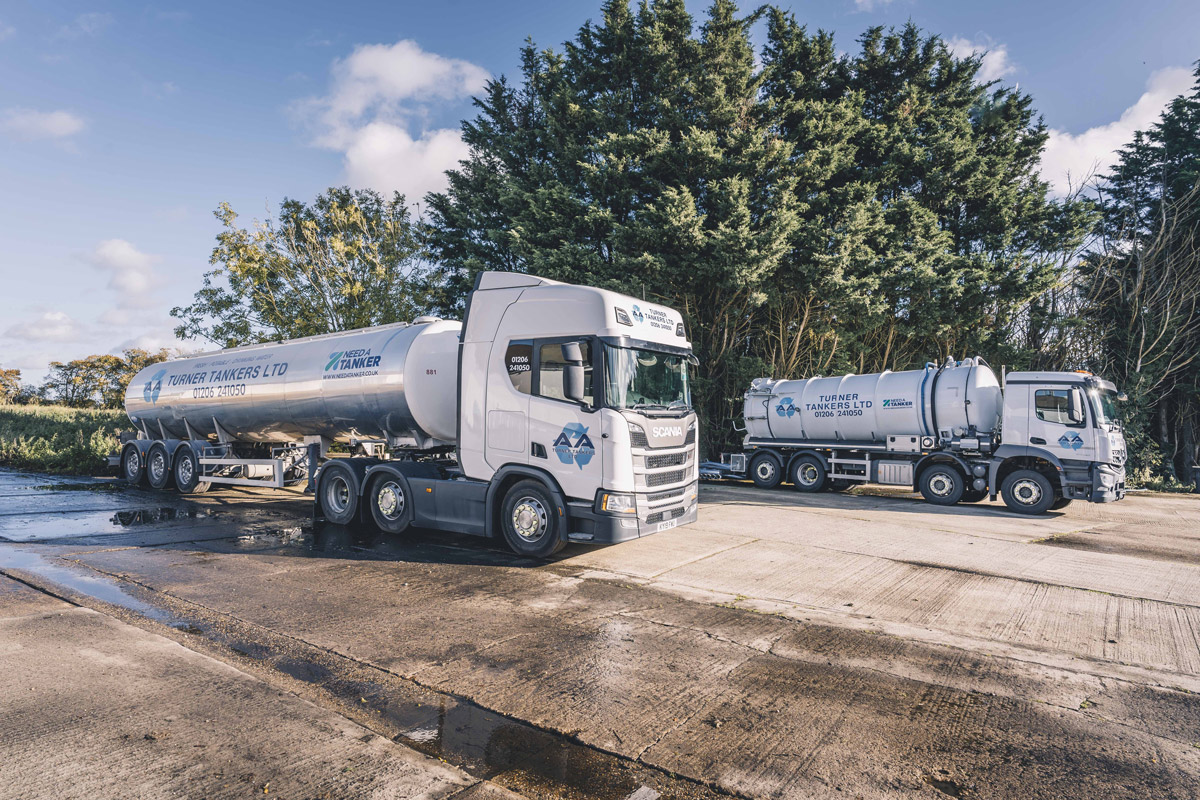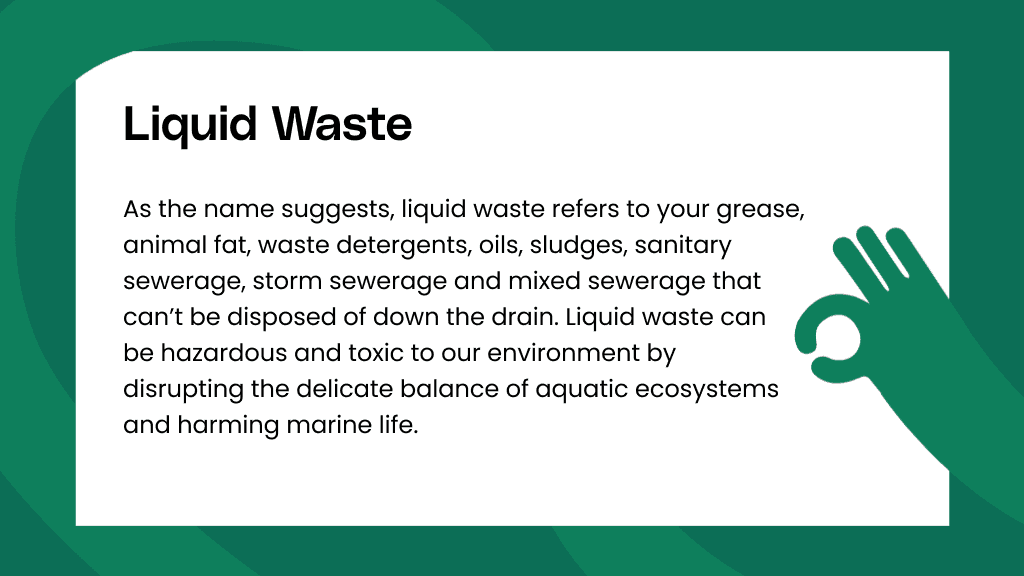The 8-Second Trick For Reclaim Waste
The 8-Second Trick For Reclaim Waste
Blog Article
The 30-Second Trick For Reclaim Waste
Table of ContentsIndicators on Reclaim Waste You Need To KnowReclaim Waste for DummiesAn Unbiased View of Reclaim WasteEverything about Reclaim WasteFacts About Reclaim Waste Uncovered
Explore the kinds, occurrences, and kinds of fluid waste. Domestic sewer waste describes the waste and items from a residential septic container. This kind of waste is developed by human beings in homes, colleges, and other buildings. This only consists of septic containers that have a drain area. The correct monitoring and disposal of domestic sewage waste need fluid waste to be transferred to a sewage treatment plant where the appropriate approaches and devices are applied to purify and deal with waste.
Industrial waste commonly includes possible threats, such as combustible products or a combination of liquid and strong waste items, and calls for an extra advanced and comprehensive disposal procedure. The disposal of business waste commonly includes the filtration of waste before transport to guarantee risk-free and correct disposal. Hazardous waste is developed from results and drainage of commercial processes and production.
This sort of waste can not use the very same sewer management transport or procedures as septic or commercial liquids. The hazardous waste monitoring procedure calls for the examination and screening of liquid waste before it goes through the disposal procedure (liquid waste disposal). Runoff waste is the fluid waste that originates from runoff and excess stormwater in extremely populated areas or cities
Drainage waste can cause contamination and flooding if not dealt with effectively. Ensuring correct waste administration can prevent catastrophes and reduce ecological injury.
Things about Reclaim Waste
Call PROS Services today to learn more about our waste administration and disposal solutions and the appropriate means to care for the fluid waste you create.
(https://moz.com/community/q/user/reclaimwaste1)Do you understand what happens to your water when you pull the plug, flush the commode or drain the cleaning machine? No? Well, it deserves understanding. This supposed 'wastewater' is not only an important resource but, after treatment, will be released to our land, waterways or the sea. Utilized water from toilets, showers, bathrooms, kitchen sinks, laundries and commercial processes is recognized as wastewater.

water utilized to cool down machinery or clean plant and tools). Stormwater, a form of wastewater, is overflow that moves from agricultural and metropolitan locations such as roofing systems, parks, yards, roadways, courses and rain gutters right into stormwater drains pipes, after rain. Stormwater streams untreated directly to neighborhood creeks or rivers, eventually reaching the ocean.
The Single Strategy To Use For Reclaim Waste
In Queensland, many wastewater is treated at sewage therapy plants. Wastewater is transferred from domestic or industrial sites via a system of sewage systems and pump terminals, understood as sewerage reticulation, to a sewage therapy plant.
The Division of Natural Resources suggests city governments about handling, operating and preserving sewerage systems and therapy plants. In unsewered locations, regional governments might call for homeowners to set up private or household sewage therapy systems to deal with domestic wastewater from toilets, cooking areas, restrooms and washings. The Department of Natural Resources authorizes making use of home systems when they are proven to be reliable.
In some new neighborhoods, therapy of some stormwater to eliminate litter, sand and gravel has actually begun utilizing gross pollutant catches. Wastewater treatment happens in four stages: Gets rid of solid issue.
Makes use of little living organisms knows as micro-organisms to damage down and get rid of remaining dissolved wastes and great particles. Micro-organisms and wastes are included in the sludge.
The Best Strategy To Use For Reclaim Waste
Nutrient removal is not offered at all sewer treatment plants due to the fact that it needs expensive specialist devices. Clear fluid effluent generated after treatment might still contain disease-causing micro-organisms - liquid waste removal melbourne.

This normally means wastewater needs to be dealt with or contaminants gotten rid of prior to it can be discharged to waterways. A lot of wastewater moves into the sewerage system. Under the Act, city governments provide authorizations and permits for eco pertinent tasks (Ages) including wastewater releases that may have a regional influence. The division administers authorizations and licences to Periods including wastewater releases that could click to read more have a local or statewide impact.
The 25-Second Trick For Reclaim Waste
Monitoring offers valid details about water high quality and can verify that licence problems are being met. The details obtained via tracking offers the basis for making water quality choices.
Report this page